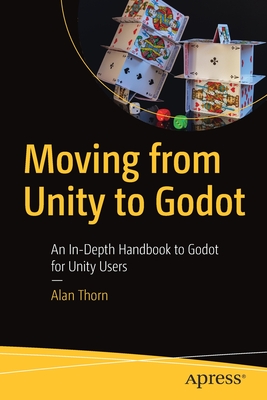Multimedia for Learning: Methods and Development, 3/e
暫譯: 學習多媒體:方法與開發(第三版)
Stephen M. Alessi, Stanley R. Trollip
- 出版商: Allyn
- 出版日期: 2000-11-19
- 售價: $998
- 語言: 英文
- 頁數: 580
- 裝訂: Paperback
- ISBN: 0205276911
- ISBN-13: 9780205276912
已絕版
買這商品的人也買了...
-
 C++ Primer, 3/e 中文版
C++ Primer, 3/e 中文版$980$774 -
 XML 程式設計藝術 (XML How to Program)
XML 程式設計藝術 (XML How to Program)$950$855 -
 $1,029Operating System Concepts, 6/e (Windows XP Update)
$1,029Operating System Concepts, 6/e (Windows XP Update) -
 Java 網路程式設計 (Java Network Programming, 2/e)
Java 網路程式設計 (Java Network Programming, 2/e)$880$695 -
 Visual C#.NET 程式設計經典
Visual C#.NET 程式設計經典$650$514 -
 ASP.NET 程式設計徹底研究
ASP.NET 程式設計徹底研究$590$466 -
 數位照片魔法學園
數位照片魔法學園$490$417 -
 Visual C# .NET 新世代高手
Visual C# .NET 新世代高手$550$435 -
 鳥哥的 Linux 私房菜-伺服器架設篇
鳥哥的 Linux 私房菜-伺服器架設篇$750$638 -
 鳥哥的 Linux 私房菜─基礎學習篇增訂版
鳥哥的 Linux 私房菜─基礎學習篇增訂版$560$476 -
 SCJP‧SCJD 專業認證指南 (Sun Certified Programmer & Developer for Java 2 #310-305 與310-027)
SCJP‧SCJD 專業認證指南 (Sun Certified Programmer & Developer for Java 2 #310-305 與310-027)$850$723 -
 JSP 2.0 技術手冊
JSP 2.0 技術手冊$750$593 -
 Struts: The Complete Reference
Struts: The Complete Reference$1,930$1,834 -
 訊號與系統 (Signals and systems, 2/e)
訊號與系統 (Signals and systems, 2/e)$875$788 -
 Perl 學習手札
Perl 學習手札$390$332 -
 Oracle 10g 資料庫最佳入門實用書
Oracle 10g 資料庫最佳入門實用書$520$411 -
 Java Network Programming, 3/e (Paperback)
Java Network Programming, 3/e (Paperback)$1,590$1,511 -
 Linux 指令詳解辭典
Linux 指令詳解辭典$650$514 -
 ASP.NET 徹底研究進階技巧─高階技巧與控制項實作
ASP.NET 徹底研究進階技巧─高階技巧與控制項實作$650$507 -
 軟體測試理論與實作
軟體測試理論與實作$520$406 -
 Sniffer Pro 網路最佳化與故障排除手冊
Sniffer Pro 網路最佳化與故障排除手冊$580$452 -
 Linux iptables 技術實務─防火牆、頻寬管理、連線管制
Linux iptables 技術實務─防火牆、頻寬管理、連線管制$620$490 -
 聖殿祭司的 ASP.NET 2.0 專家技術手冊─使用 C#
聖殿祭司的 ASP.NET 2.0 專家技術手冊─使用 C#$720$569 -
 聖殿祭司的 ASP.NET 2.0 專家技術手冊-使用 VB
聖殿祭司的 ASP.NET 2.0 專家技術手冊-使用 VB$720$569 -
 Multimedia Learning, 2/e (Paperback)
Multimedia Learning, 2/e (Paperback)$2,080$1,976
商品描述
This book shows how to use computers in educational settings by combining learning theory and instructional strategies to help the reader design software for learning and instruction.
The book has been extensively revised to include new approaches to multimedia instruction as well as updating established methods such as tutorials, drills, simulations, games, and computer-based tests. Constructivist and instructivist approaches are analyzed and presented. The book is not equipment or software specific.
Table of Contents
Preface.
I. GENERAL PRINCIPLES.
1. Introduction.
A Short History of Educational Computing.
When to Use the Computer to Facilitate Learning.
The Process of Instruction.
Methodologies for Facilitating Learning.
Two Foundations of Interactive Multimedia.
Developing Interactive Multimedia.
2. Learning Principles and Approaches.
Behavioral Psychology Principles.
Cognitive Psychology Principles.
Constructivist Psychology Principles.
The Constructivist - Objectivist Debate.
3. General Features of Software for Learning.
Learner Control of a Program.
Presentation of Information.
Providing Help.
Ending a Program.
II. METHODOLOGIES.
4. Tutorials.
Questions and Responses.
Judgement of Responses.
Feedback about Responses.
Remediation.
Organization and Sequence of Program Segments.
Learner Control in Tutorials.
5. Hypermedia.
Structure of Hypermedia.
Hypermedia Formats.
The Hypermedia Database.
Navigation and Orientation.
Support for Learning and Learning Strategies.
6. Drills.
Basic Drill Procedure.
The Introduction of a Drill.
Item Characteristics.
Item Selection and Queuing Procedures.
Feedback.
Item Grouping Procedures.
Motivating the Learner.
Data Storage and Program Termination.
Advantages of Multimedia Drills.
7. Simulations.
Types of Simulations.
Advantages of Simulations.
Factors in Simulations.
Simulation Design and Development.
8. Educational Games.
Examples of Educational Games.
General Factors in Games.
Factors in the Introduction of a Game.
Factors in the Body of the Game.
Factors in the Conclusion of a Game.
Pitfalls Associated with Creating and Using Games.
9. Tools and Open-Ended Learning Environments.
Construction Sets.
Electronic Performance Support Systems.
Microworlds.
Learning Tools.
Expert System Shells.
Modeling and Simulation Tools.
Multimedia Construction Tools.
Open-Ended Learning Environments.
10. Tests.
Computerized Test Construction.
Computerized Test Administration.
Factors in Tests.
Other Testing Approaches in the Computer Environment.
Security.
11. Web-Based Learning.
What Is the “Web” in Web-Based Learning?
Uses of the Web for Learning.
Factors in Web-Based Learning.
Concerns with Web-Based Learning.
Advantages of Web-Based Learning.
The Future of Web-Based Learning.
III. DESIGN & DEVELOPMENT.
12. Overview of a Model for Design and Development.
Standards.
Ongoing Evaluation.
Project Management.
Phase 1. Planning.
Phase 2. Design.
Phase 3. Development.
Establishing Expectations.
The Evaluation Form.
13. Planning.
Define the Scope of the Content.
Identity Characteristics of Learners and Other Users.
Establish Constraints.
Cost the Project.
Produce a Planning Document.
Produce a Style Manual.
Determine and Collect Resources.
Conduct Initial Brainstorming.
Define the Look and Feel of the Project.
Obtain Client Sign-Off.
14. Design.
The Purpose of Design.
The Audiences for Design Documents.
Develop Initial Content Ideas.
Task and Concept Analyses.
Preliminary Program Description.
Detailing and Communicating the Design.
Prototypes.
Flowcharts.
Storyboards.
Scripts.
The Importance of Ongoing Evaluation.
Client Sign Off.
15. Development.
Project Management.
Prepare the Text Components.
Write the Program Code.
Create the Graphics.
Produce Video.
Record the Audio.
Assemble the Pieces.
Prepare Support Materials.
Alpha Testing.
Making Revisions.
Beta Testing.
Final Revisions.
Obtaining Client Sign-Off.
Validating the Program.
商品描述(中文翻譯)
這本書展示了如何在教育環境中使用電腦,通過結合學習理論和教學策略,幫助讀者設計學習和教學用的軟體。
本書經過廣泛修訂,包含了多媒體教學的新方法,並更新了如教學、練習、模擬、遊戲和電腦測試等既有方法。對建構主義和指導主義的方法進行了分析和呈現。本書並不針對特定的設備或軟體。
目錄
前言
I. 一般原則
1. 介紹
教育計算的簡短歷史
何時使用電腦來促進學習
教學過程
促進學習的方法論
互動多媒體的兩個基礎
開發互動多媒體
2. 學習原則和方法
行為心理學原則
認知心理學原則
建構主義心理學原則
建構主義與客觀主義的辯論
3. 學習軟體的一般特徵
學習者對程式的控制
資訊的呈現
提供幫助
結束程式
II. 方法論
4. 教學
問題與回應
對回應的評價
回應的反饋
補救措施
程式片段的組織與順序
教學中的學習者控制
5. 超媒體
超媒體的結構
超媒體格式
超媒體資料庫
導航與定位
對學習和學習策略的支持
6. 練習
基本練習程序
練習的介紹
項目特徵
項目選擇與排隊程序
反饋
項目分組程序
激勵學習者
數據存儲與程式終止
多媒體練習的優勢
7. 模擬
模擬的類型
模擬的優勢
模擬中的因素
模擬的設計與開發
8. 教育遊戲
教育遊戲的例子
遊戲中的一般因素
遊戲引入的因素
遊戲主體中的因素
遊戲結尾的因素
創建和使用遊戲的陷阱
9. 工具和開放式學習環境
建構套件
電子性能支持系統
微世界
學習工具
專家系統外殼
建模與模擬工具
多媒體建構工具
開放式學習環境
10. 測試
電腦化測試的構建
電腦化測試的管理
測試中的因素
電腦環境中的其他測試方法
安全性
11. 網路學習
網路學習中的「網路」是什麼?
網路在學習中的用途
網路學習中的因素
網路學習的顧慮
網路學習的優勢
網路學習的未來
III. 設計與開發
12. 設計與開發模型概述
標準
持續評估
專案管理
第一階段:規劃
第二階段:設計
第三階段:開發
建立期望
評估表
13. 規劃
定義內容的範圍
識別學習者和其他使用者的特徵
建立限制條件
預算專案
製作規劃文件
製作風格手冊
確定並收集資源
進行初步腦力激盪
定義專案的外觀與感覺
獲得客戶簽字確認
14. 設計
設計的目的
設計文件的受眾
發展初步內容想法
任務與概念分析
初步程式描述
詳細說明與傳達設計
原型
流程圖
故事板
腳本
持續評估的重要性
客戶簽字確認
15. 開發
專案管理
準備文本組件
撰寫程式碼
創建圖形
製作視頻
錄製音頻
組裝各部分
準備支持材料
Alpha 測試
進行修訂
Beta 測試
最終修訂
獲得客戶簽字確認
驗證程式






























